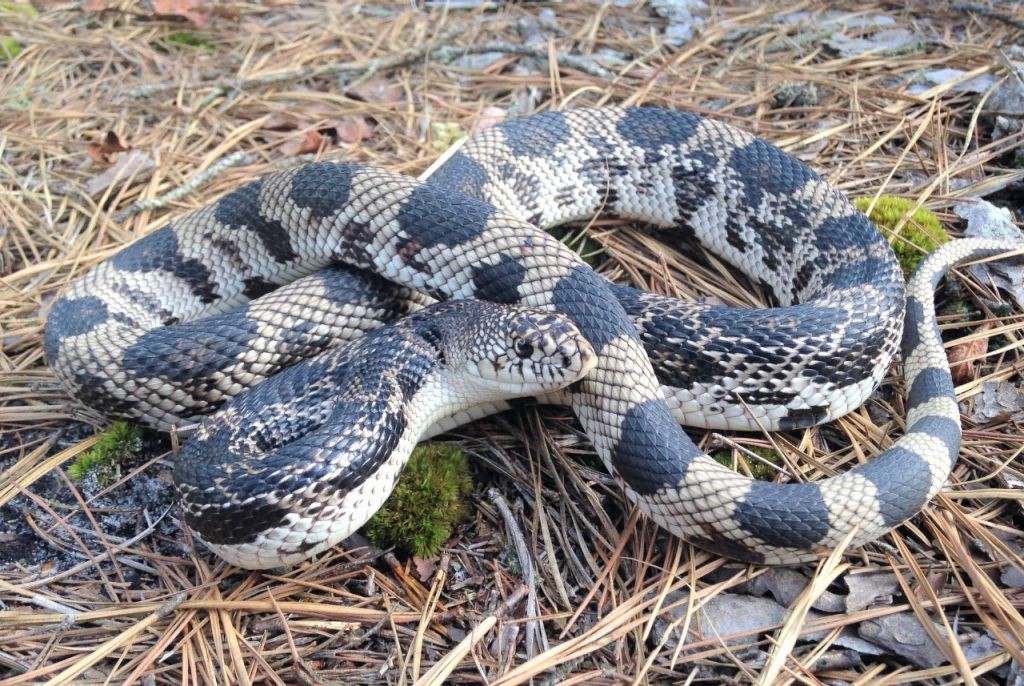
The Virginia Tech Department of Fish and Wildlife Conservation is collaborating with the Virginia Department of Wildlife Resources and the U.S. Forest Service to collect data on the status of the nonvenomous pinesnake in Virginia.
Anyone spotting a pinesnake is asked to contact Collegiate Assistant Professor Kevin Hamed (540-231-1887 or khamed@vt.edu). If possible and safe, take a photograph of the snake and record the details of the area where the snake was. Pinesnakes can be found in areas with sandy, well-drained soils or dry rock ridges.
The last known sighting of the pinesnake (Pituophis melanoleucus) in Virginia was over 30 years ago. Northern populations of the pinesnake are found in disjunct locations in New Jersey, Tennessee, and the Carolinas. Southern pinesnake populations are found in Georgia, Florida, and coastal regions in Mississippi and Alabama.
Pinesnakes (aka bull snakes) provide ecosystem services to humans by preying on many creatures that cause homeowners problems, such as small mammals. A better understanding of their current distribution in Virginia is needed to manage and conserve these amazing reptiles. Several areas of Virginia have ideal habitats that could support pinesnakes.
The pinesnake averages about 50 inches in length and often has black blotches on a white background or brown blotches on a tan or yellowish background. When threatened, it will expel air quickly, producing a loud hiss, which can be intimidating but poses no danger.
Two other nonvenomous snakes present in Virginia may be confused with the pinesnake. The eastern hog-nosed snake, which averages about 25 inches in length, has dark blotches with red, orange, yellow, gray, olive, brown, or black background colors. The juvenile eastern ratsnake is heavily patterned, with a light color underneath and patches of darker reddish brown or rusty black overlaying the lighter base. Most also have a distinct eye stripe that extends from eye to eye across the top of the skull.


